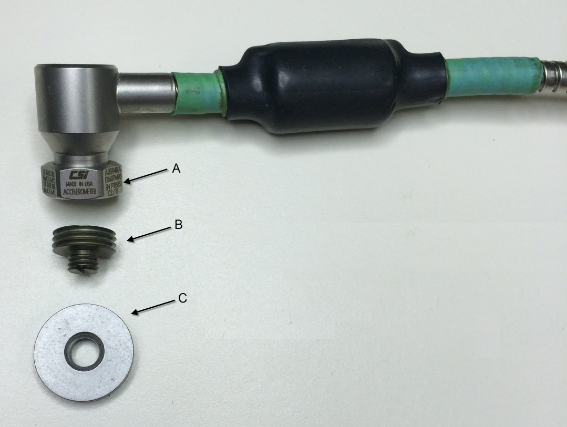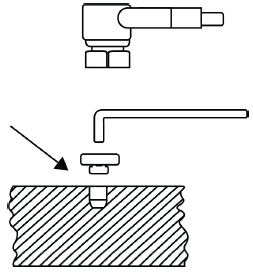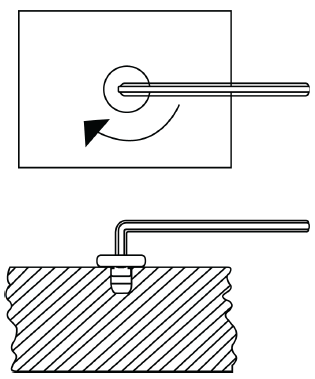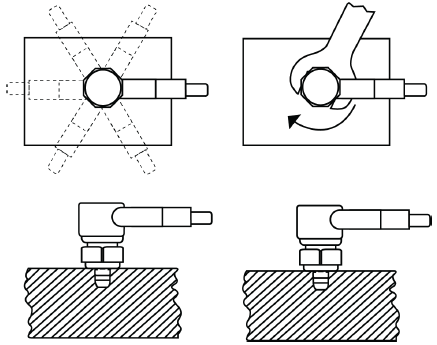Prerequisites
Overview
Figure 1 shows a typical accelerometer, mounting stud, and mounting pad used with the CSI 9420. The mounting pad is only necessary when doing an epoxy mount.
Figure 1. Accelerometer, mounting stud, and optional mounting pad
- accelerometer
- mounting stud (included with the accelerometer)
- mounting pad



